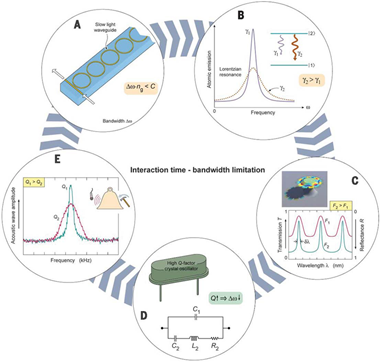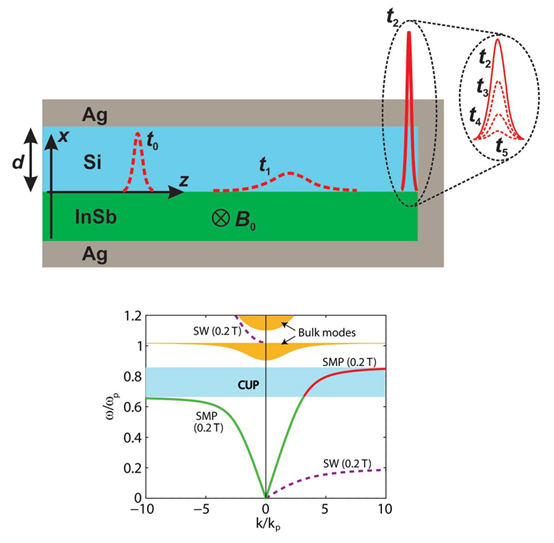June 23, 2017, the State Key Laboratory studies of Modern Optical Instrumentation, Zhejiang University School of photoelectric Zheng Xiaodong researcher involved in the completion of "Breaking Lorentz reciprocity to overcome the time -bandwidth limit in physics and engineering" ( to break the Lorentz reciprocity Overcoming the time bandwidth limits in physics and engineering) published in Science ( DIO : 10.1126/science.aam6662 ). The study designed a resonant system with a wave packet in and out time that successfully broke the “time bandwidth limit†that limited the design of the resonator for more than a hundred years. The higher the degree of system asymmetry, the higher the degree of exceeding the "limit". This research will play a profound role in the development of new devices and systems. The famous science news website PHYS.ORG reported on the topic " A 100-year-old physics problem has been solved " and caused a lot of attention and discussion.
According to reports, Shen Linfang, a former researcher at the State Key Laboratory of National Optical Instruments of Zhejiang University (now a researcher at the Space Research Institute of Nanchang University), is the co-first author of the article. Zheng Xiaodong of Zhejiang University and Professor Deng Xiaohua of Nanchang University are co-authors of the article. . The entire team consists of nine researchers from six universities in Canada, China, the United States and Switzerland . The key system used in the design of asymmetric systems in research is the hybrid cavity / waveguide system of magneto-optical materials jointly researched by Nanchang University and Zhejiang University .
The following is an interpretation of this progress by Zheng Xiaodong, who participated in this research:
What is the "time bandwidth limit"?
Resonance is a common phenomenon in related fields such as light, electricity, sound waves, machinery, etc. Resonant devices and systems are widely used in various industries in modern society. For example, laser resonators, various waveguides, and the like. Leaving the resonance, the computer is no longer calculating, the mobile phone can't brush the screen, the TV can't display the image, the radio can't receive the sound, the watch can't be timed, and a lot of resonators are needed in all kinds of physical and engineering systems that support social operation. For a long time, the design of the resonant system is considered to be subject to a basic limit, that is, the time for storing energy such as the resonant cavity is inversely proportional to its bandwidth; or the product of the storage capacity and the system bandwidth is fixed, there is a "time" Bandwidth limit."
Â
This law was proposed by KS Johnson in 1914: the cavity has a longer energy storage time and a narrower bandwidth; or a larger bandwidth, but a shorter energy storage time. It is impossible to store big data for a long time in the cavity. Because long time means narrow bandwidth and vice versa. This time-bandwidth limit rule has never been challenged for more than a hundred years. Physicists and engineers have been using this to design and build optical, acoustic, and electronic resonant systems (see Figure 1). From the leading micro/nano optical waveguides, to the vibrational relationship in atomic/molecular structures, all types of resonant cavities, crystal oscillators, etc., are limited by time bandwidth limits.

Figure 1. Many optical and electrical systems limited by time - bandwidth
Break the "magic"
Now, this limit has become a theory in the past. So how is this spell broken? The solution proposed in the paper is to break the "Lorentz reciprocity". The Lorentz reciprocity theorem is the fundamental theorem of electromagnetic fields. What it describes is: "In linear and isotropic media, if the source and observer positions are interchanged without changing the source, the field at the new observation point is equal to the field at the original observation point before the exchange. "With a less accurate, but everyone can understand the analogy: If the cavity is likened to a room, the energy oscillation of the traditional cavity is like a row of people swinging at the door, from the house to the outside and from The outside is the same as the house, and there is reciprocity. This reciprocal resonant cavity can only allow people who are swaying in and out to stay in and out, and can stay in the house for a long time; if the speed is fast or slow, it can only stay for a short time. That is the time bandwidth limit in physics and engineering. How can we make adults, children, people who are fast and slow to go in, and how long does it take to stay in the house for a long time? The solution given by the article is to let people sway into the house at a normal speed side by side; instead of side by side from the inside out, they reverberate in order at a controlled speed. That is to say, the method of controlling energy entering and leaving the cavity at different rates, or designing a resonant system with an in-time and asymmetrical time, successfully breaks the "time bandwidth limit" that limits the design of the resonator for more than one hundred years. The higher the degree of system asymmetry, the higher the degree of exceeding the "limit".
Figure 2 asymmetric resonant cavity / waveguide system
Possible future
The breakthrough of the time-bandwidth limit of the resonant system will have far-reaching effects in many fields of physics and engineering, and the potential application prospects are very broad, including communication, light detection, energy harvesting and information storage. For example, it is possible to realize a true supercontinuum DC laser. Humans can turn many of today's light sources into directional light sources, and even change the energy storage mode of solar energy. It is expected that in the near future, a large number of new devices and systems based on this principle will emerge.
The team successfully broke the "time bandwidth limit" of the resonant system, which has plagued designers for more than 100 years, and opened up new broad development space for related fields.

